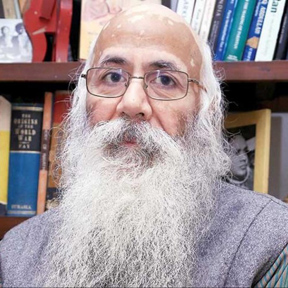
Public confusion over the extent of unemployment is a result of the differences in the various data bases used
“The ground-level situation of unemployment is apparent from the frequent reports about the youth struggling to get work and facing issues in examinations. But the government is in denial. Recently, the officials have denied the problems of using data that have holes in them or of citing KLEMS data from the RBI, which does not independently estimate employment. Why not admit the problem and act, lest the growing youth frustration boil over?”

Recently, citing a Reserve Bank of India (RBI) report that said that 8 crore jobs have been created in the last 3-4 years, Prime Minister Narendra Modi accused the Opposition of creating false narratives about unemployment. He also said that a lot of infrastructure projects are coming up, which will create more jobs. This was not only an attempt to counter the narrative of high unemployment which has been bothering the ruling party, but also a response to a flurry of reports from financial institutions, such as Citigroup, in July, which pointed to inadequacy of employment generation in India.
Mr. Modi quoted an RBI ‘Data Manual’ released on July 7, called ‘The India KLEMS Database’, which “…describes the procedures, methodologies and approaches used in the construction of India KLEMS database version 2024. The dataset includes measures of Gross Value Added, Gross Value of Output, Labor Employment, Labor Quality, Capital Stock, Capital Composition… The database covers 27 industries comprising the entire Indian economy.”
Soon after the RBI released this, the State Bank of India (SBI) came out with its own report to counter the financial institutions’ reports. It said, “Even if we exclude Agriculture, the total number of jobs created in manufacturing and services is at 8.9 crore during FY14-FY23 and 6.6 crore during FY04-FY14.” It added, “The total labor force in India is at 59.7 crore, which is nearly equivalent to 56.8 crore as per the recently released ASUSE [Annual Survey of Unincorporated Sector Enterprises] survey. This total number of labor force is significantly different from private employment surveys.”
However, the Centre for Monitoring Indian Economy (CMIE), a private data-gathering agency which publishes data on employment and unemployment, reported in July that in June 2024, the unemployment rate had risen to an eight-month high of 9.2% up from 7% in the previous month. This was contrary to the official narrative of massive employment generation.
What is a citizen to make of these conflicting reports and statements? Ground reports suggest that unemployment is a major issue. In February, about 47 lakh applicants appeared for an exam to select around 60,000 constables in Uttar Pradesh. In 2022, 1.25 crore aspirants applied for the Railway Recruitment Board’s Non-Technical Popular Categories recruitment exam. There were protests in Bihar, Uttar Pradesh and other States when the Agnipath scheme was announced in 2022. Indeed, the situation for the educated youth is grim, yet we expect them to be in the vanguard of ‘demographic dividend’.
Opposition flags video from Gujarat, slams Modi government over ‘disease of unemployment’
Public confusion over the extent of unemployment is a result of the differences in the various databases used. Let us examine these.
KLEMS data
The most recently cited KLEMS data is “a comprehensive measurement tool to monitor and evaluate productivity growth in the Indian economy”. It does not estimate employment but uses the official data available. For labor input it uses the Employment and Unemployment Surveys (EUS) by the National Sample Survey Office (NSSO), conducted between 1983 and 2011-12, and the Periodic Labor Force Survey (PLFS).” Clearly, the KLMS data is based on official data from the PLFS, the ASUSE survey, etc. Given this, why would the employment series from KLEMS differ from the total employment figure given by government agencies? So, neither the Prime Minister nor the SBI should present KLEMS data as an independent source of employment data. Clearly, the officers and economists briefing Mr. Modi misguided him.
Why do different sources give widely varying estimates of employment? This is due to the highly complex structure of the Indian economy and the paucity of reliable data. India consists of the organized and the unorganized sectors. The data for the organized sector is available from statutorily published annual data. That is not the case for the unorganized sector, which employs 94% of the labor force. No other big country has such a huge unorganized sector for which data are sparse. This sector consists of possibly 11 crore farms and 6.5 crore MSME units. Surveying them annually is difficult. Data have been collected periodically via the Census every 10 years and the ASUSE survey every five years. The government is now committed to bringing out the ASUSE survey annually. But ASUSE survey data in turn depend on data from the Census and the Urban Frame Survey (UFS). There has been no Census since 2011 and UFS data apparently pertain to 2012-17. So, outdated data are being used.
Normally, in the absence of current data, earlier data should be acceptable. But 2016-2024 was an abnormal period with four shocks to the economy: demonetization in 2016, introduction of the Goods and Services Tax, the Non-Banking Financial Companies crisis, and the COVID-19 pandemic. When shocks occur, use of pre-shock data for sampling creates problems due to structural changes. These four shocks specifically impacted the unorganized sector, the one that the ASUSE survey seeks to estimate. Many units closed down due to lack of working capital. People migrated, the size of towns and villages changed. Thus, a sample based on the 2011 Census would not be appropriate. Closures will not be captured and only the surviving units will be a part of the sample. The ASUSE 2024 Report says, “… 16,382 FSUs (8,495 in rural and 7,887 in urban) have been surveyed; and the total number of establishments surveyed has been 4,58,938 (2,58,296 in rural areas and 2,00,642 in urban areas). ASUSE 2022-23 gives an estimate of 6.50 crore establishments…”
Due to the shocks, the rural-urban ratio and the ratio of smaller and larger units would have changed. This could give an upward bias to the number of establishments and their employment.
Differences in PLFS and CMIE
PLFS is the other official data source quoted widely. It differs greatly from the CMIE data. This has to do with differences in definitions, such as who is counted as employed. The CMIE adopts the International Labor Organization definition and counts only those who get an income from work as employed. PLFS counts those who are working even if they do not get an income from it. So, those giving free labor or those who sit in fields but have no work also get counted as employed by PLFS. Consequently, in the last few years, PLFS has given around 50%-55% labor force participation, while CMIE says the figure stands at 40%-45%. That means there is a huge difference of about 90 million between the two. The question then is, doesn’t nearly everyone do something or the other? There are millions of home makers doing work, for example. Further, PLFS counts the disguised unemployed and the under-employed. So, as far as PLFS is concerned, almost no one is unemployed, while CMIE tells us how many have simply given up looking for work. That is also unemployment, which the official data do not recognize.
The ground-level situation of unemployment is apparent from the frequent reports about the youth struggling to get work and facing issues in examinations. But the government is in denial. Recently, the officials have denied the problems of using data that have holes in them or of citing KLEMS data from the RBI, which does not independently estimate employment. Why not admit the problem and act, lest the growing youth frustration boil over?
(Arun Kumar is a retired professor of economics, Jawaharlal Nehru University, and author of Indian Economy’s Greatest Crisis: Impact of the Coronavirus and the Road Ahead)




Be the first to comment